Tripura
This is the report of a holiday in Tripura in May 2012. The weather was hot and humid, only relieved by the occasional thunderstorm. We were told that the best time to visit Tripura is October-January. The lush jungles and the five century old historical monuments make Tripura a wonderful place to visit. Insurgencies of a decade ago have faded in recent years, and Tripura is now safe to travel in. However, the tourism industry is highly underdeveloped, and may take another decade to reach the levels of, for example, Assam.
Planning your trip
Information and research
It is hard to research Tripura on the net. There is only one reasonable web site, which belongs to the government's department of tourism, and contains one short para about each suggested location. Wikipedia adds a little more. It turns out to be very hard to search deeper information about historical sites, or specifics on driving directions, permits and other practical information.
We found some things quite accidentally: for example, that temples of Udaipur (Tripurasundari, Bhubaneswari and Gunabati) have an unique architecture, and that some of them date back to the end of the 15th century. This information came from boards put up by the Archaeological Survey of India at the site. A less pleasant discovery was the extent of poverty in the Jampui hills and the lack of wildlife there. Another late and unpleasant discovery was that permits to visit interesting parts of any wildlife sanctuary are given by the forest department in Agartala and not at the sanctuary.
Often, the "last mile" to our destination could be hard, mainly because of the absence of road signs and the lack of maps (stemming from the fact that much of Tripura is close to an international border). Not knowing the best route to Dumboor lake cost us precious hours, limiting very strongly what we could see. We missed out entirely on the rock carvings at Pilak because of this; an experience which made us careful when we were near Chhabimara.
Where to stay
As a matter of stated policy, the tourism department is promoting tourism in the state. This includes creating a large number of state owned guest houses in various spots. None of them is very large, and the accommodation, basic though it is, is superior to what private accommodation is ocassionally available in smaller places.
There are no restaurants outside Agartala, Udaipur, and some of the more popular temples. You have to eat at the lodge you stay in. Every bazaar has stalls with tea and snacks as well as sweet shops. Fresh vegetables and fruit is also available everywhere, as well as the usual packaged food and beverages. Electricity outages (load shedding) are common and sometimes extensive. A hotel room will usually have only one plug, so you need to carry distribution boards to charge your cameras, phones, laptops and all other electronics. Carrying an emergency bed sheet and towel is useful.
Agartala
We had two hard nights in a smelly and grungy place called Hotel Rajdhani (the pictures on the website are quite false, and yes, the address and phone number are of the hotel we were in) before we changed to Ginger. Our experience at Ginger was quite what we expected: corporate hotel with a welcome large clean bed, perfectly fine and clean toilet and the kind of furniture you expect in a business hotel. We were happy to stay at the Ginger. Bang opposite this is a new state government guest house, which looked scrubbed and new.
Eden Lodge in Vangmun (Jampui hills)
The only place to stay in the Jampui hills was our worst experience during the holiday. The state-owned Eden Lodge had a wonderful location on top of a hill, with a view to die for. The fungus growing on the walls of the lobby made it look like an uncared-for establishment. The manager tried to shoehorn our party into a smaller number of rooms than we had booked, claiming that a storm had blown the roof off several rooms. The food was atrocious: a fact that we excused because the area is so poor. Given the other problems with the Jampui hills, one can avoid this area.
Gomati Yatri Niwas, Udaipur
A really small town: there was only one place outside the hotel where we could have a very basic meal. The quality of rooms in the government run tourist guest house varied tremendously. Ours was clean and in good repair, although the plumbing was rusted. Other rooms had various problems. There was one highly competent person at the reception, but the quality of service dropped dramatically on other shifts. One could try to pass through Udaipur without stopping.
Muhuli Guest House, Trishna Wild Life Sanctuary
The government run guest house in Muhuli, near Bellonia town, was our most pleasant experience. The cottages were new, and the bedsheets and towels were completely clean. The bathrooms, with Indian style toilets, were okay, but clearly received less attention from the cleaners than the bedroom. The location was very pleasant and quiet. The manager was excellent and accommodating, and made sure that the meals were the among the best we ate on this holiday. Unfortunately, the government plans to create a miniature amusement park around the complex, instead of improving the quality of the buildings and toilets
Sagarika Lodge, Amarpur
The tourist guest house in Amarpur is as new as the one in Muhuli, but clearly suffers from a bad manager. The friendly and helpful kitchen staff essentially run the place while the manager spends his time on Facebook. There are issues of maintenance which clearly require a manager's attention. My guess is that in the next couple of years the guest house will become a shabby place unfit for tourism. This is a major hub for interesting tours, so one hopes for a change in the management.
Sagarmahal Lodge, Neer Mahal
The Sagar Mahal tourist guest house occupies the pride of the place in the hierarchy of guest houses in Tripura: every manager wants to be here. However, when we arrived it had a very shabby feel: our room was festooned with wiring put in just any how, the bathroom was grungy, the velvet covered sofas somewhat dusty. The power went off four times during the night and never came back after 4 in the morning. The surly manager was oblivious to the fact that moss was growing inside corridors around leaky walls. Sagarmahal is just a couple of hours from Agartala, so a day trip is probably the best way to see this place.
Things to see and do
For lack of information on permits, we did not manage to do justice to the wild life sanctuaries we visited. In spite of that, it was clear that wildlife is the strength of the state (more details later). The archaeological sites are fantastic, but small, and not worth a separate visit. Fortunately, they are located so that they can be seen on the way between major wildlife sites or in day trips from Agartala. The exception is Unnakoti, far to the north east of the state. We did not visit this, but by all accounts, should have skipped the stop at the Jampui hills and gone on to Unnakoti.
The food is a monotonous and basic variant of Bengali cuisine. Breakfast is parathas and vegetables unless you insist on eggs. Both lunch and dinner consist of large amounts of rice with dal and some fries, some more vegetables and then a fish or chicken. If you are vegetarian then you just do without that last course. If you want a Bengali dessert, you have to buy it at a sweetshop afterwards. Alternative styles of food are only available in Agartala: where you can have things like egg rolls, fish fingers, pani puri (if you dare) and (hold your breath) fried pizza. However, fresh fruit is abundant all over the state, and you could use them to break the monotony.
There is little shopping in Tripura. The main handicrafts are wood and cane work. A garment known as the pachra (or patra), a kind of sarong used by many of the tribes, is the other main thing to look out for. Each tribe has its own traditional designs, and on trips through the state you are bound to see spectacular colours and designs. It is hard to find them in shops; if you are interested, you should ask in every bazaar you pass. Tribal jewelery is stunningly modern in look, but impossible to find in shops.
The outstanding sights were the groups of temples in Udaipur and the rock carvings of Chhabimura (mura, literally head, denotes a mountain when used in place names). The best wildlife experiences were in Trishna (bison and golden langoor), Sepahijala (spectacled langoor) and the river boat along the Gomati to Chhabimura (Hoolock gibbon). We could not make it to Unnakoti, Pilak and interesting parts of Dumboor lake.
Check-list of places
Agartala
Agartala is not full of things for a tourist to do. The biggest attraction is the road crossing to Bangladesh with a traffic of around 200 trucks a day. The lowering of the flag is interesting precisely because it is a quiet ceremony quite different from the Bollywood jingoism of Wagah. The Ujjanta Palace in the middle of the town in another pleasant visit, especially for the impressive sculptural group in the lawn in front of the east wing of the palace. I wish there was some information on who made this. There is a museum on Central Road which we did not manage to visit.
There is some shopping and eating out in Agartala. Khunti Karai on Central Road and Adi Shankar Hotel on Netaji Subhash Road are especially recommended. The latter makes a wonderful steamed Hilsa in mustard sauce. A walk through the fish and vegetable market outside the Ujjanta Palace is recommended, if for nothing else than for advise from Bengali and Debbarma shoppers on how to cook some of the vegetables peculiar to the area.
Cycle rickshaws are the main means of transport in the town. They come beautifully decorated with individualized paintings of gods or bucolic scenes. In another state these would seem contrived, but here the same scenes are all around you as soon as you leave Agartala.
Udaipur
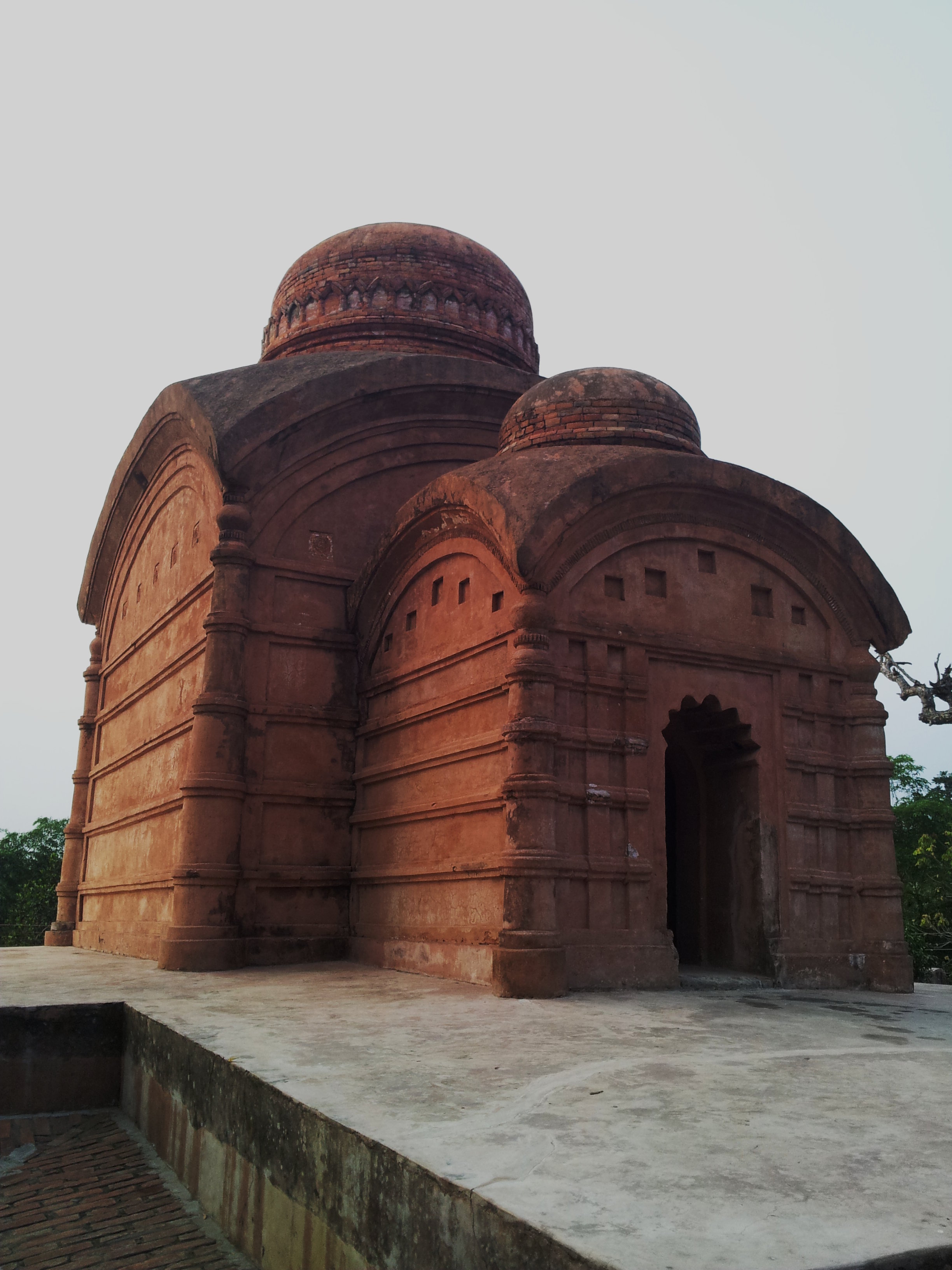 Bhubaneshwari Temple, Udaipur, Tripura
Bhubaneshwari Temple, Udaipur, Tripura
Udaipur was the historic capital of the Tripura kingdom before the shift to Agartala at the beginning of the twentieth century. It is a pleasant town situated on a turn in the course of the Gomati (Gumti) river, with four large lakes and several ancient temples and mosques.
The temples of Udaipur are worth visiting. The Tripurasundari temple dates from 1501 but is still in use. It is a nice setting on top of a hillock with a pond in front of it. The Bhubaneswari temple from 1668 is a lovely burnt brick structure unique to Tripura. Near this out-of-use but protected monument is a broken and abandoned temple in a similar pattern, which the locals believe was the ancient temple where human sacrifices were carried out before the king stopped this practice and built the other temple. In actuality this structure was a temple to Vishnu, and a temple fair is still held in front of it. Between these two are the ruins of a grand house, presumably the king's. Elsewhere in the small town are a group of three abandoned temples in the same lovely style, now protected monuments. You can find documentation on these in the website of the Archaeological Survey of India.
You can find a place to eat in the bazaar or around the Tripurasundari (Mata) temple. If you eat near the temple fix the prices before you sit down. We found a young jeweller in the bazaar, who was well-travelled inside India, as a suprisingly large number of youngsters are, and was willing to talk to us about his life, why he came back to Udaipur, and how he spends his time.
Chhabimura (aka Devtamura)
I had the best day of my holidays in Chhabimura. In spite of what tourist brochures say, it should not be confused with the nearby Devtamura, which has a hilltop temple to Shiva which you reach by climbing a thousand feet by stairs carved into the mountain. To reach Chhabimura you turn right on to a small paved road after the second bridge from Amarpur (in the direction of Udaipur), go off this road soon towards Devbazaar. Then you continue along a country road over a couple of streams and come to the Gomati (Gumti). The road trip is under an hour. From here you have to take a boat ride to see the main rock carvings, with a return time of two and a half hours.

The drive to Chhabimura and the subsequent boat ride was the best birding opportunity we had. This area is full of Jamatia tribes who live mainly by fishing. The boatmen were Jamatia. The fishermen working along the river had wonderful catches of fish, including strange species we had not seen before. At one point along the river we saw foraging Hoolock gibbons. It turns out that the Jamatia call this animal the Hoolock (similar to the Bengali OollOock), from which the word enters into English. Another stunning sight was of a score of fishermen wading through the shallow water, dragging nets downstream. They were planning to walk through the river, catching fish in their nets in order to sell it in Ranibari market, near Udaipur. Along the highway this would have been an hour's drive. This amazing boat ride, the great wildlife, the interactions with the Jamatia, were the clear high point of the tour.
Jampui Hills (Vangmun)
Although the Jampui hills contain the highest peak in Tripura, it was the lowest point of our travel: the guest house was atrocious, the birding was scarce (although butterflies made up for it somewhat), and the local Reang and Lushai tribes were rather poor. The orange plantations which we read about have been affected by blights, and the orange festival in winter has been stopped. We spent time in a little tea shop, run by a very pleasant Lushai lady, outside the block office and met several Lushai locals who had the time to spend in pleasant conversations with us. This is where we heard the claim that the lack of bird-life had to do with the dietary habits of the locals. Some supporting evidence for this theory was the number of youngsters we saw by the road with catapults. Apart from these insights into local life, a major high point was my first sighting of the glorious butterfly called the Golden Birdwing.
Dumboor Lake
The Dumboor Lake was a white elephant of a project by the state government of the 1980s. The object was to raise a series of barrages across the Gomati (Gumti) river to generate 11 Megawatts of power. This created the lake and displaced a very large number of Reang tribal villages, creating wide spread poverty among a once self-sufficient community. This in turn led to extremist violence for two decades. Subsequent deforestation led to silting behind the dam has reduced the power output from the project to about 7 Megawatts by today.
Due to the lack of definite information, we tried to approach the Dumboor Lake via Nutanbazar. It turns out that this road takes a couple of hours each way, and takes you to a point called Mandir Ghat behind the first of the barrages on the Gomati (Gumti). From Mandir Ghat you have to hire a motor launch to get to the main lake; a journey of two and a half hours. This is too long for a day trip, so we spent the rest of the day off the road between Mandir Ghat and Nutanbazar. Birding and butterflies are scarce either because of the proximity to the road or because of the destruction of the local ecology by the dam. We did see a larger number of beetles here than elsewhere on our trip.
The situation may be better after monsoon when the lake level rises, for then the trip by boat could be shorter. However, it may be better to take the northern route through Gandachhera where you reach the lake directly by road. The lake attracts migratory birds in winter, when the sighting is bound to improve.
Trishna WLS
Visits to the Trishna Wildlife Sanctuary improve no end if you have a permit to visit the core area on foot with a guide. This permit is issued by the forest department in Agartala, a fact that is not documented anywhere. As a result we could only visit the open areas in the periphery and the part of the (inappropriately named) core area which is open to visitors on request. Nevertheless, the sanctuary yielded marvellous sightings.
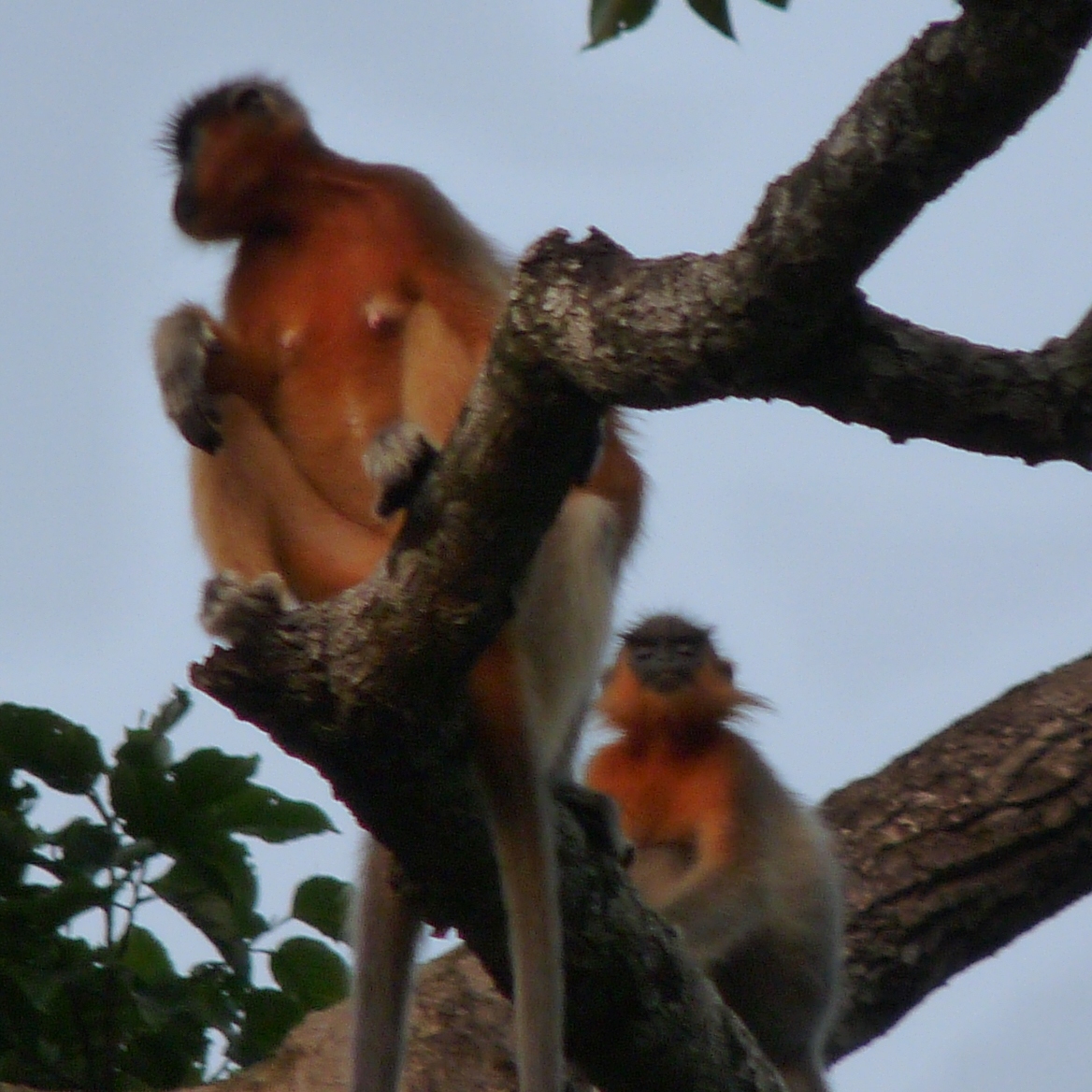
A pond at the edge of the open core area is a great spot for birding around sunrise and sunset, as long as you have binoculars. Since you are not allowed to walk around it, there is little to be seen without lenses. The open area on the other side of the main road also has good birding at sunset and sunrise, even without optics. The walks inside the open areas are wonderful for butterflies and other insects. Right across a stream at the beginning of the walk is a tree where a tribe of the spectacularly coloured golden langoors come to roost for the night. From the edge of the core area just after sunset you can see families of Indian bison on their daily foraging walks. If you are lucky, as we were on one day, then you could get a very close look at them.
A wide area around the sanctuary is probably alive with wildlife. One night we saw a porcupine snuffling along the side of the path we were walking on. It froze when it saw us, and then quickly slunk away into the undergrowth. We saw wonderful moths every night, attracted to the lights in our rooms. And there were wonderful other insects too.
Sepahijala WLS (the Clouded Leopard Sanctuary) and zoo
The Sepahijala zoo, which is all that the locals know of, is inside the sanctuary. The two kilometer drive to the zoo has trails leading off it with large unfriendly signs in Bengali which translate to "No entry without permission". That the permission is available in Agartala is not mentioned anywhere.
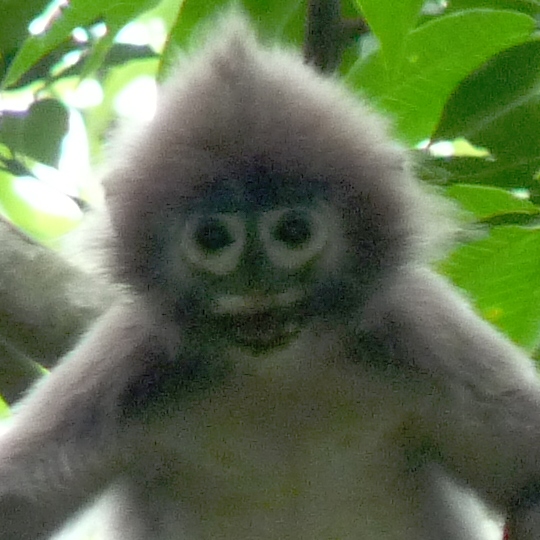
Nevertheless, a walk along the public road can be rewarding. We saw a tribe of spectacled langoors on a tree right next to the black top road, serenely watching us watching them. We gave up on the mutual admiration before they did. Later when we came back they were gone. The road offers good sightings of the more widespread butterflies and birds.
The zoo is worth a visit, if for nothing else than several breeding pairs of the rare clouded leopard. They are hard to spot inside the open moated cages, and we could see them only after zoo attendants pointed them out to us. The zoo looks run down, but the animals are kept in reasonable conditions: in moated open areas.
Neer Mahal (Rudrasagar Lake)

When the Neer Mahal palace was built in 1938, it must have been a marvellous sight. It is still impressive: sitting out in the middle of the Rudrasagar Lake and approachable only by boat. The lake is slowly being taken over by water hyacinth, and could do with a good cleaning and desilting. The palace seems to be maintained by uninterested care takers; the sound and light show having stopped because of a "failure of machinery". With a little imagination you can make out the rich playfulness hidden beneath moss grown walls; for example, the sheer joy of a grand staircase sweeping up to a ballroom from a "driveway" which could only be used by boats! Little wonder that it once attracted poets and writers.
Kamalasagar Lake and Kali temple
While it is supposed to have been founded in 1501, the Kali temple disappoints because it has been renovated into an RCC structure. The most interesting part is a little mound of earth at the entrance with two stumps of worn wood set into it: a place where goats are still sacrificed to Kali. The temple and the pond, Kamalasagar, constitute a tiny semicircular enclave cut into the Bangladesh border. Visible just beyond a high fence defining the border is the railway station of the small town of Kasbah. Its inhabitants stand across the fence and talk readily to visitors about how life changed when the fence came up in 2008.
Eco parks
We learnt to look out for eco-parks which have been set up along highways and roads. These tended to yield sightings of birds and insects (including butterflies and moths). Baramura, Teliamura, Tepania and Kakrabagan were all interesting in their ways, and each would take about an hour to walk through. After visiting a couple of these we realized that the hills of Tripura are mainly compacted clay, held together by vegetation. So any deforestation means that the land is washed into the nearest river; possibly the reason for the heavily silting of rivers.
The ideal itinerary
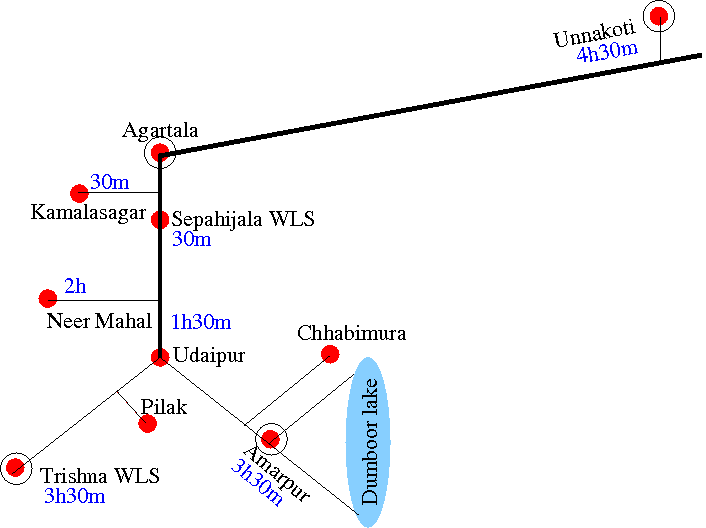
In hindsight, a better plan for a week's trip would have been to base ourselves in Agartala and plan a mixture of day trips and overnight stays. Two day trips would suffice to cover Sepahijala, Kamalasagar and Neer Mahal. The night halts would be at Unnakoti, Muhuli (Trishna WLS) and Amarpur. Udaipur lies on the way to Trishna and Amarpur, and can be seen during one of these trips. Visits to the Trishna WLS and Pilak can be done in one trip based out of Muhuli. Visits to Dumboor lake and Chhabimura can be completed from a base at Amarpur.
Since NH 44 (the dark line in the map) connects Udaipur and Unnakoti to Agartala, large parts of the road trips would be on a well-maintained highway. Side roads to Kamalasagar, Neer Mahal, Trishna and Amarpur are also on good roads. Expected driving times to these places from Agartala are marked in the map. The road deteriorates off Amarpur, and takes significantly longer than distances would lead you to believe.
Fauna
We have already described the mammals we saw: clouded leopards in Sepahijala zoo, spectacled langoors in the wild outside; Indian bison, golden langoor and a shy porcupine in the Trishna WLS, and, most spectacular of all, Hoolock gibbons in the wild in the forests around Chhabimura. We also saw a lot of butterflies, and a fair number of birds; these are listed below. There was an abundance of insect life: moths, bugs, dragonflies, and other genera which we did not know enough about to identify. In these lists the species which seem to be widespread are not assigned a location, but those which we spotted in one or two places only are tagged accordingly. Another bird list is more extensive. I haven't found any other butterfly list for Tripura.
Tripura Bird List
- Large green barbet
- Lineated barbet (Sepahijala)
- Little-green bee eater
- Black bulbul
- Black-crested bulbul (Dumboor lake)
- Red-vented bulbul
- Red-whiskered bulbul (Jampui)
- Pied bushchat (Trishna WLS)
- Rufous-winged bushlark (Trishna WLS)
- Cormorant
- Large-billed crow (Trishna WLS)
- Lesser coucal (Trishna WLS)
- Indian cuckoo (calls only)
- Darter
- Black drongo
- Racket-tailed drongo
- Oriental spotted dove
- Cattle egret
- Little egret
- Scarlet-backed flowerpecker (Trishna WLS)
- Common hawk-cuckoo (Trishna WLS)
- Indian pond heron
- Little heron (Chhabimura)
- Black-headed ibis
- Bronze-winged jacana (Trishna WLS)
- Red jungle fowl (m/f) (Sepahijala)
- Small blue kingfisher
- White-throated kingfisher
- Black kite (Agartala)
- Red-wattled lapwing (Trishna WLS)
- Scarlet minivet (m/f) (Jampui hills)
- Scaly-breasted munia (Neer Mahal)
- Bank myna
- Common myna
- Hill myna (Jampui)
- Jungle myna
- Nightjar (Trishna WLS)
- Black-headed oriole (Sepahijala, Trishna WLS)
- Spotted owlet (Trishna WLS)
- Red-breasted parakeets (Jampui)
- Rose-ringed parakeet
- Blue rock pigeon
- a prinia
- Quail (Trishna WLS)
- Magpie robin
- Indian rollerbird (Sepahijala, Trishna WLS)
- House sparrow
- Chestnut-tailed starling (Sternus blythii) (Jampui hills and NH 44)
- Chestnut-tailed starling (Sternus malabaricus) (Trishna WLS)
- Pied starling
- Asian open-billed stork (Trishna WLS)
- Asian Palm swift (Trishna WLS)
- Rufous treepie (Trishna WLS)
- Common flameback woodpecker (Udaipur)
Tripura Butterfly List
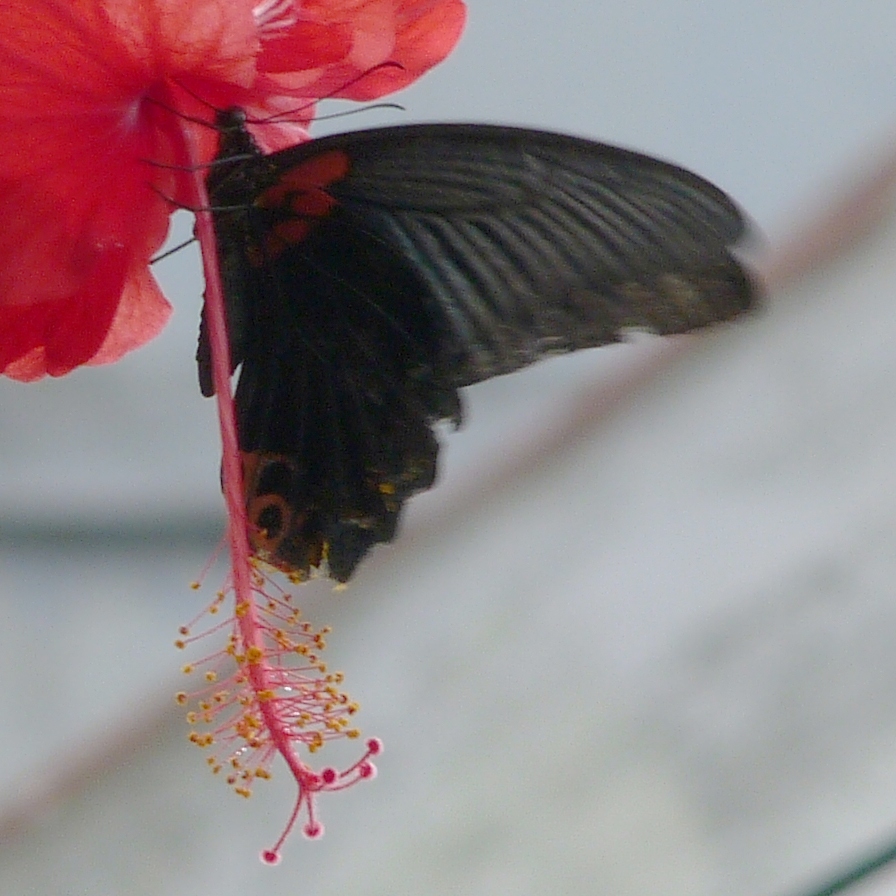 |
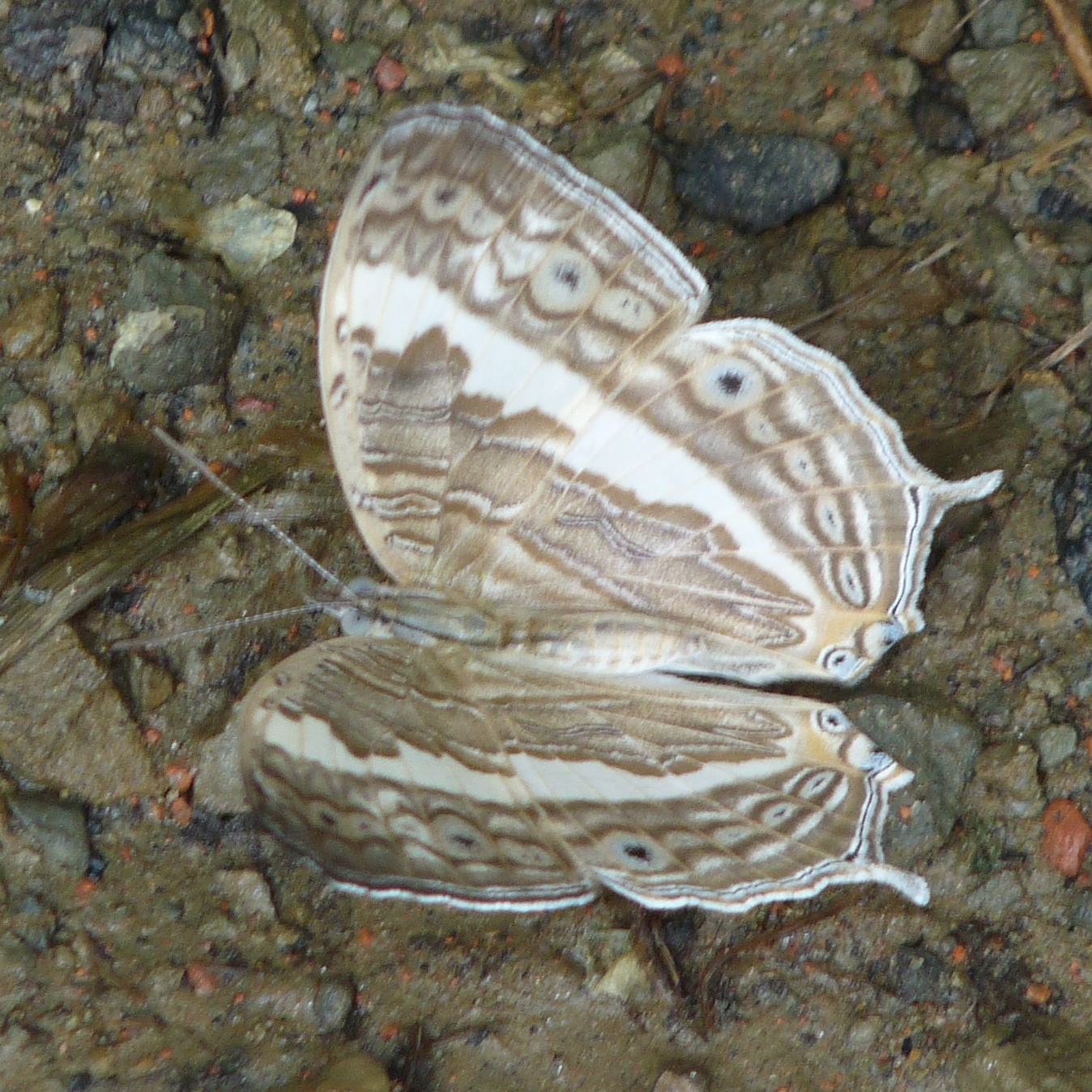 |
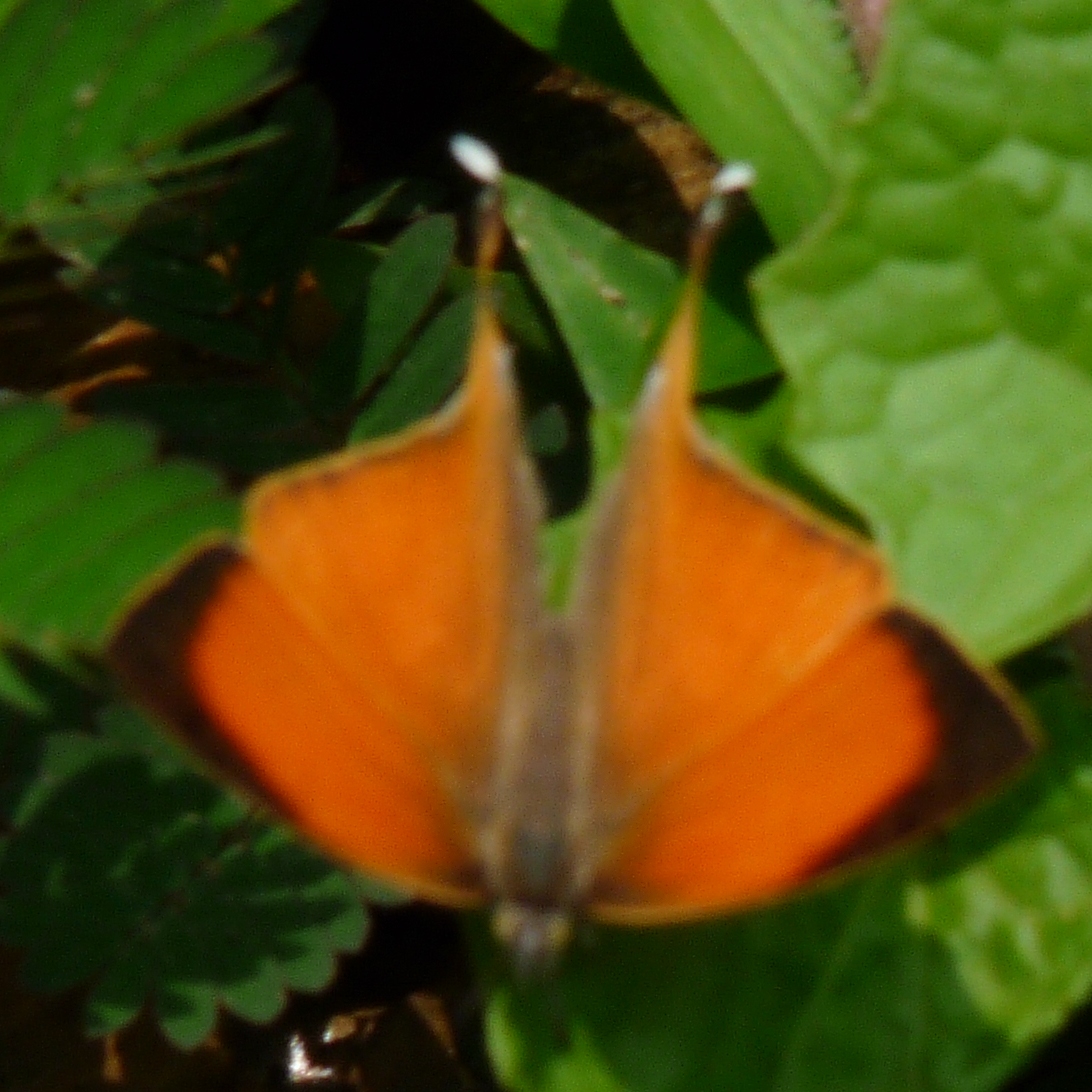 |
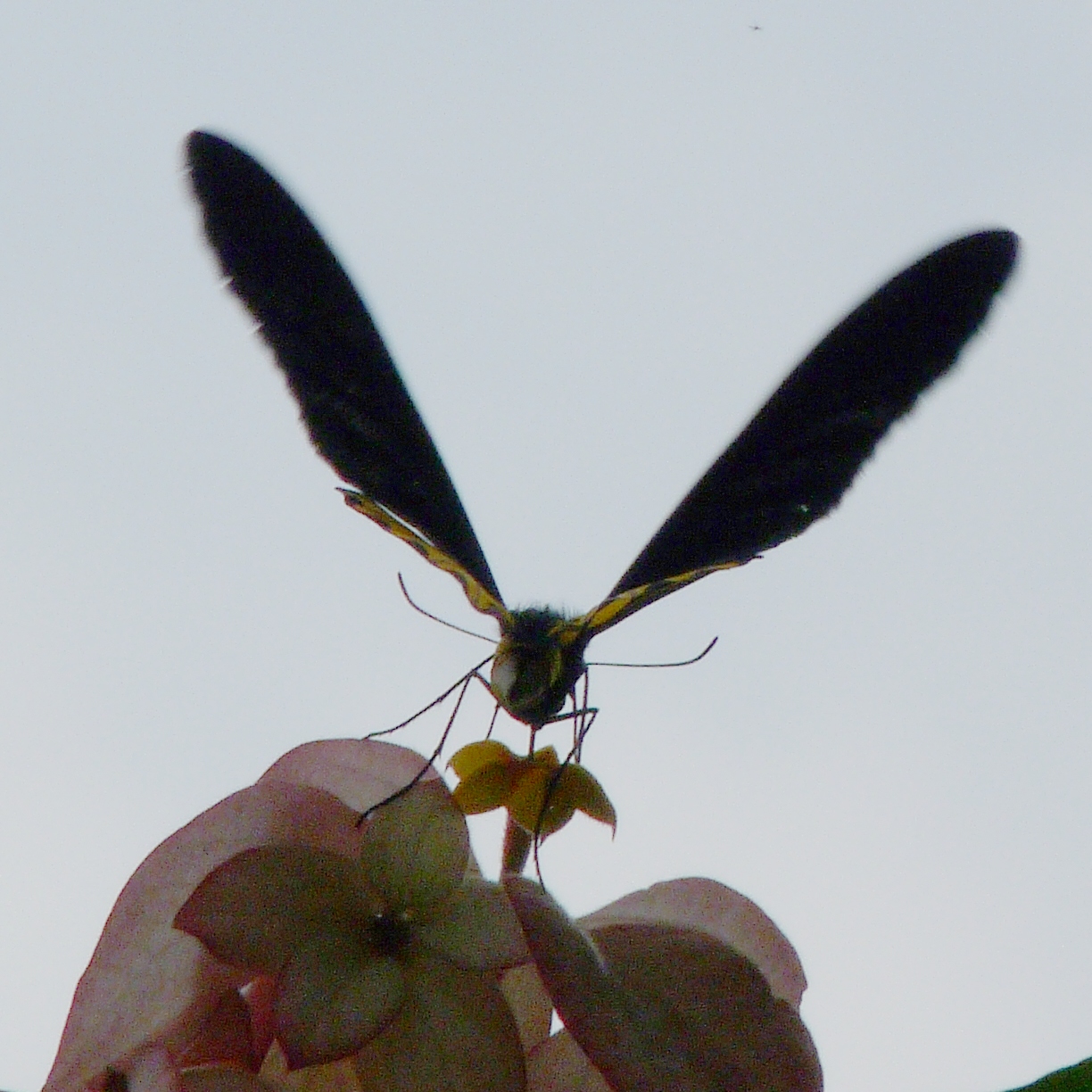 |
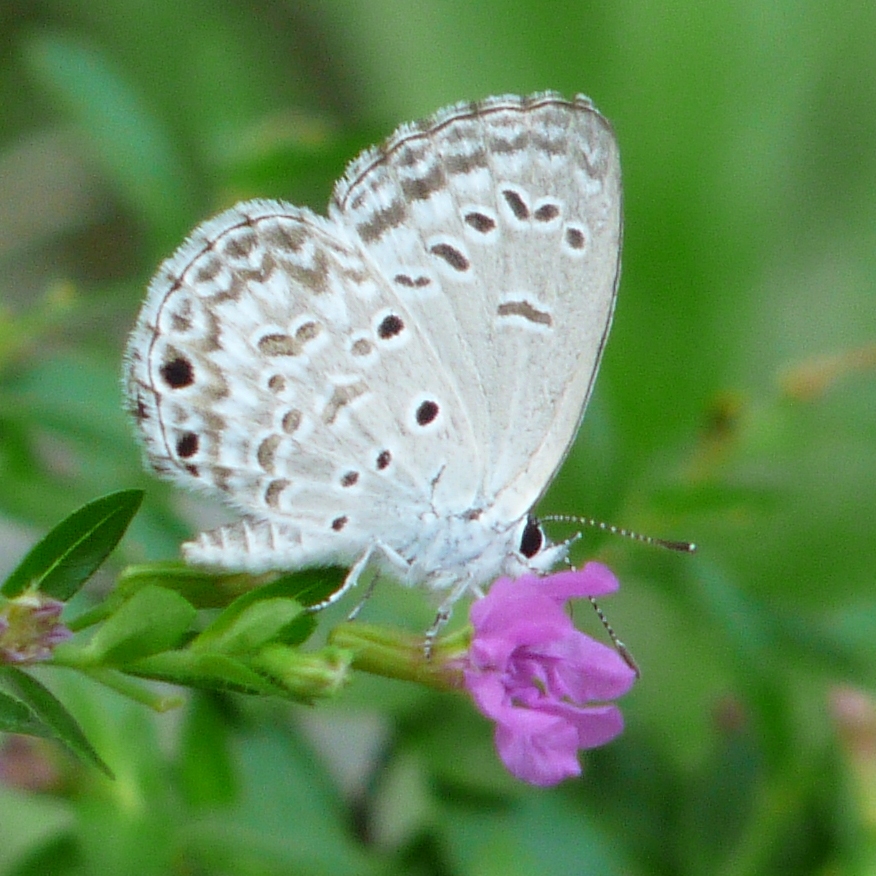 |
 |
| A | B | C | D | E | F |
- Common grass yellow
- One spot grass yellow
- Three spot grass yellow
- Common hedge blue: figure E
- Tiny grass blue
- Pale grass blue
- Dark grass blue
- Lesser grass blue
- Common grass blue
- Common brimstone
- Mottled emigrant
- Pale clouded yellow
- Psyche
- Banded blue pierrot
- Common crow
- Blue-spotted crow
- Striped tiger
- Common baron
- Common Mormon
- Chocolate pansy
- Lemon Pansy
- Gray Pansy
- Yellow Pansy
- Peacock Pansy
- Marbled map (Jampui hills): figure B
- Common albatross (Jampui hills)
- Common rose (Jampui hills)
- Crimson rose (Jampui hills)
- Lime (Jampui hills)
- Red Helen (Jampui hills): figure A
- Yellow Helen (Jampui hills)
- Common mime (Jampui hills)
- Yamfly (Jampui hills): figure C
- Common wanderer (Sepahijala)
- Common sailer (Trishna WLS)
- Common Lascar (Trishna WLS)
- Plain earl (Trishna WLS)
- Golden birdwing (Jampui hills)
- Common birdwing (Sepahijala, Trishna WLS): figure D
- a swift (Dumboor lake): figure F
- Bush hopper (Chhabimura)
- Great orange tip (Chhabimura)
© Sourendu Gupta. Inputs from Radiya Pacha Gupta, and Doreen D'Sa. Created on 15 May 2012. Last modified on 20 May, 2012.
